There’s a classic tune called “What a Difference A Day Makes.” In foraging we might say what a difference 150 miles can make.
Where I live in mid-Florida Chickweed is strictly a winter crop. It shows up in early December and is hard to find by Valentine’s Day. It’s the James Dean of winter greens: Grows fast, short-lived, if you don’t collect it when you see it the tasty forgeable will disappear for a year. Thus it was with great surprise to find a couple of sprigs of it growing in Jacksonville this past weekend a buck fifty north of here. Have they had cooler nights than usual in North Florida? Will there be a cooler winter than usual, as one student suggested? As the newspaper ad used to say “inquiring minds want to know.” Not only was Chickweed sprouting but so was Bittercress, another winter visitor, and in exactly the same place as the Chickweed. Unusual and quite a coincidence, if it is one. It just may be my inattention and me not spying it in the past, or, maybe Ma Nature knows something we don’t. To read about Chickweed which will be showing up elsewhere soon, go here. For Bittercress, here. If you want to hear a very well-done soft jazz version of “What a Difference A Day Makes,” click here.
In Ocala this weekend, 80 miles north, there was one very happy Poor Man’s Pepper Grass. While it’s in theory a year-round plant it, too, favors the cooler months. This specimen was the first fresh one I have seen this fall. Also in Ocala I saw one of my mysteries which I didn’t mention in class. I have eaten a lot of ripe Solanum americanum berries. I know the controversial plant well. In Ocala I consistently see in a particular area a S. americanum that has slightly larger berries than usual, and a slightly bitter after taste, thus is not consumed. This year the berries were sweeter than usual but still had a lingering bitter aftertaste. While I don’t know the definitive answer why this is so one possibility is hybridizing with a garden variety. In botany, as they used to say in haying, not every thing is cut and dried. Plants are not a settled subject. That’s the only location where I have found such a S. americanum.
Distance is something I have mentioned before. Just south of Portland, Maine, on the coast, there is Black Point and Pine Point, fingers of land that… ah… point into the ocean. They are not 1,000 feet apart. But because of weather patterns influenced by ocean currents Black Point is a degree or two cooler on average and there the predominant conifer is spruce, which are slightly darker in color than the dominant pines on warmer Pine Point. That’s a rare case where 1,000 feet horizontally makes a difference. A thousand feet up (or down) definitely can make a plant difference as well. Every 1,000 feet up or down is like traveling, seasonally, 700 miles north or south.
Solar Oven Update: In 2008 I purchased a solar oven from Solarovens.org. I have used it weekly if not more than once a week since. I usually cook one meal dishes, not unlike what one can do with a crock pot. Most often I cook a whole small chicken with vegetables. Depending upon the season this takes three to four hours. The oven slowly warms to around 325F though cooking starts at 185F (water become sterile at 165F.) Accumulating moisture on the upper area of the inner lid and aroma tells one when the meal is done. I use extra reflectors — not really necessary in Florida — and I use it year round. After more than four years of weekly wear and tear how is holding up?
While I have no complaints and would recommend the oven the most serious issue is warping plastic, particularly the clear lid, upper left. The warp is small but it allows heat to escape from either end so I’ve had to add two carpenter clamps on each end (right) to keep the heat in and the temperature up. The clear lid has a large sheet of flexible plastic attached to it on the inside. Over time moisture gets in there and makes the whole lid a little less clear reducing heating. Inside the over itself some of the black paint has worn off where I put my oval, enameled pot. Also the plastic inner rim that holds the lid flat has warped between bolts (above) so I may have to look into adding leveling weather stripping as well.
All these small changes have collectively dropped the oven’s heating capacity. When new with extra reflectors in the Florida sun I could get a little over 400F in the oven. Now 325/350F is is about as hot as it will get. These ovens were designed to be inexpensive cooking tools in poor countries so they are made of plastic and sheet metal (and still cost us the same price as four years ago.) The same design in steel with a non-warping cover might last for far longer than four years making it more cost effective. One thing I don’t know is whether it would not be warped if I did not use extra-reflectors (sold by the oven supplier) in the Florida summer sun. But then again, that’s where I live and use it. Unlike four years ago there are now many different websites selling solar ovens so there is quite a choice and price range now. Presuming I used it on average twice a week for four years the cost per use was 42 cents, less than electricity and it works when there is no electricity.
Solar oven cooking is very forgiving. If you forget something for an hour or even two no great harm is done. The chicken above was put out at 9:39 a.m. All that went into the pot was the bird, some spices, raw mushrooms and uncooked Brussels sprouts. It should have been done between noon and 1 p.m. I forgot about it until 2:45 p.m. It was still moist, there was two inches of broth in the pan (no liquid was added.) All to show for the extra time was a light browning on the top of the bird. Let a dish like that over-cook two hours in a conventional oven and you might even have a fire!
What of that weed, which is a plant growing where someone doesn’t want it to grow? Of the 33 billion acres on earth only 10 percent is farmable. Weeds reduce the amount of productivity of those acres by at least 10% costing upward to $18 billion dollars a year. At least 100 million acres of land are “infested with noxious weeds” in the United States at a cost of $6 billion or more. Some 1,400 plants are considered “pests” in the United States and 106 are on the Federal Noxious Weed list among them cactus and blackberries. I can remember once looking at one state’s top ten noxious weeds, seven of which were edible. There are approximately 1.4 billion weed seeds per acre (30,000 to 350,000 per square meter.) Many can survive in the soil for decades. Now you know why weeds take over your garden. You also now know why learning about eating weeds is a good idea because the odds are they will continue to grow no matter what, and on their own.
Time for one of my two annual rants: Halloween. While the value and purpose of Halloween can be debated — more money is made during Halloween than Christmas because of candy sales — what most of my readers don’t have to endure is what commuters are exposed to each Halloween season on Florida’s Interstate 4 (which runs cross-state from Daytona Beach to Tampa.) Every year Universal Studios plasters grotesque billboard along the Interstate featuring blood, gore and dismemberment, and that is an understatement. Whatever happened to pumpkins and ghosts? The studio says their events in Orlando and Hollywood are too intense for children but that does not stop the company from putting the debauchery on billboards for all to endure. You can read about how Halloween has changed here. To read about a really ghoulish edible plant, click here.
Updated articles: Sea Grapes, Field Testing.
THE UNTOUCHABLES: Elliot Ness would be proud. To the right is the Saddleback Caterpillar (Acharia stimulea, formerly Sibine stimulea) the most commonly encountered toxic caterpillar in North America. No matter what you call it this creature is strictly look but don’t touch. It’s the colorful larva of the Saddleback Caterpillar Moth and native to eastern North America. They can be found feeding on apple, asters, blueberries, cherry, citrus, corn, dogwoods, elms, grapes, holly, linden, maples, oaks, palms, plums, potted flowers, sunflowers and viburnums. The adult moth is brown and nondescript. Although the Saddleback may look cute enough to pet, the technicolor display is a huge warning to anyone to stay away, and for good reason. Its spikes, called “urticating hairs,” are full of hemolytic and vesicating venom which deliver a painful sting that can last for days. In fact, the hairs can break off, become airborne, or stick on material such as cloth and still sting. There are at least 20 stinging caterpillars. Leave every hairy caterpillar alone except perhaps the weather-casting common “banded woolly bear” Pyrrharctia isabella. Incidentally, Lady Bugs are toxic, too, and taste bad. It’s coloring is also a warning to predators not to eat it. However, to read about edible insects go here.
Ginkgo trees are making a stink in New York City parks. The fruit of the female Ginkgo trees release their odor for a few weeks each fall as the trees’ leaves turn bright yellow. Some say the smell is almost unbearable, others say they thought it was dog droppings. Tree experts say the few weeks of unpleasant aroma are worth it for the beauty the trees add to parks the rest of the year. That’s also why non-fruiting male Ginkgo trees are often planted for ornamental use. “It’s a warm, lush golden color, shimmers in the fall sunlight,” said Neil Calvanese of the Central Park Conservatory. But Calvanese admitted the fruit smells like, “warm rancid butter.” The Ginkgo nut can be toxic to eat raw though cooked nuts are edible in moderation. To read more about Ginkgo click here.
 Lastly, this newsletter is something of an anniversary. It was 367 days ago the web-based version was launched and some 42 newsletters written since then. A few weeks were missed by vacations, storms, computer issues and trying to decided whether to write one every week or every other week. One daily newspaper I wrote for required a column a week. Of all the journalistic duties that was the most difficult because one had to find something interesting every week where as life is not always interesting. It was a challenge and good training for this newsletter. Here’s looking forward to another year.
Lastly, this newsletter is something of an anniversary. It was 367 days ago the web-based version was launched and some 42 newsletters written since then. A few weeks were missed by vacations, storms, computer issues and trying to decided whether to write one every week or every other week. One daily newspaper I wrote for required a column a week. Of all the journalistic duties that was the most difficult because one had to find something interesting every week where as life is not always interesting. It was a challenge and good training for this newsletter. Here’s looking forward to another year.
To donate to the Green Deane Newsletter click here.


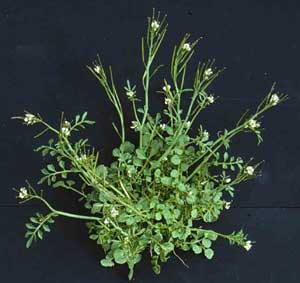
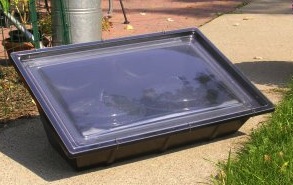
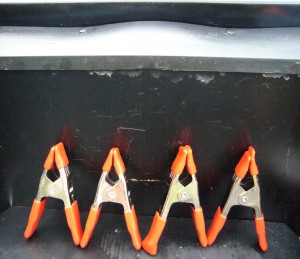
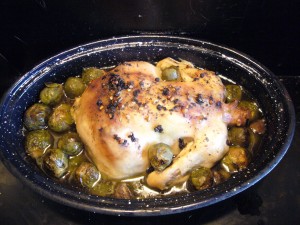
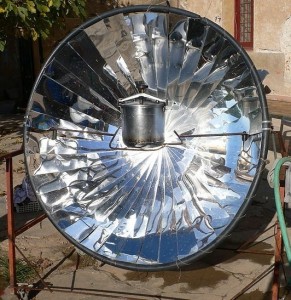
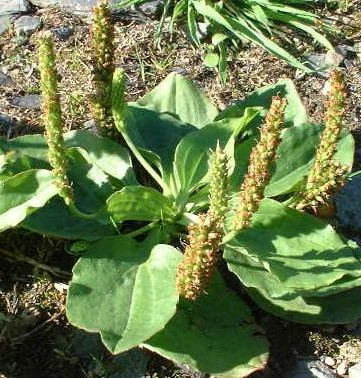
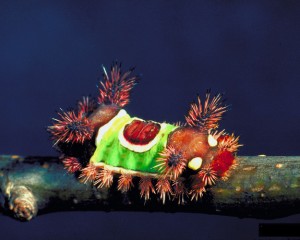
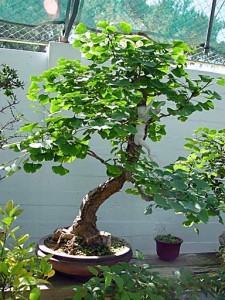

Happy aniversery Green Deane!!
Love your newsletter, once again. the saddleback is a beautifully unusual specimen. I was stung, unknowingly by one while tending an estate garden. I realized the caterpillar and sting when I couldn’t move my leg.my entire thigh became numb for several hours. Happy AUTUMN!
Fabulous newsletter. Thank you!
Yes, GreenDeane, Happy Anniversary, and keep ’em coming!
Your newsletter always provides a wealth of interesting information and the site has answered many questions I have had regarding different ‘weeds’.
I hope to attend another one of your classes soon, as they are both entertaining and inspiring!
I too was stung by the saddleback caterpiller. I was simply brushing the leaves aside on the ground to pick mushrooms and didn’t know what happened at first. I then saw it. I had two fingers stung but they swelled and my wrist hurt to bend it and then my arm was numb. The symptoms lasted for about a day and a half. I have to admit, it is the funniest looking creature ever!
Thanks for the awesome newsletter. It is extremely helpful!
Thanks for the great work!!
Hey Dean,
Happy Anniversary! I love reading about the wild edibles.
I own the same solar cooker. Had mine about 4 years and love it. Mine is not warped, but I have heard from others that they have had the same problem. My feeling is that it is “over reflector use.” I used to use the reflectors all the time, but about a year ago I was on some website it specifically said not to use the reflectors in the summer, since the internal temp would get too high and damage the oven. Since then, I have stopped using the reflectors. But of course now I worry that my dinner won’t be ready on time. It usually is.
Happy first birthday.
Happy Anniversary! We’ve enjoyed your site and newsletter immensely and like some languages, our knowledge of plants and their uses, are fading away. Your willingness to share and spread this helpful lore is more important than most realize. Thank you!
Happy Anniversary and thank you for the most interesting newsletter I’ve found. I love it.
Thank you for spreading this knowledge, that without people like you, would be lost or forgotten. You are greatly appreciated!!
Congratulations…Enjoy the newsletter…always informative…great photos…and appreciate the humor!
Happy Happy
Love your newsletter
I usually save ‘eat the weeds’ for dessert in my email, as it’s so enjoyable, even though most of the plants don’t grow here in NZ. Great specific information, but fun to read. Long may it continue.
I’ve owned and used that same solar oven for a couple of years now. Mine hasn’t warped yet but maybe I’ll buy a few clamps just in case. Try cooking some squirrel stew sometime it yours.
Keep those posts coming.
Happy anniversary bro.
Wow, Deane- already a YEAR? COOL. Congrats! I have learned so very much from you. Thank you.
Aloha,
am sooo grateful for your newsletter Deane…..seriously a fantastic compilation of wild foods and the lifestyle tips to support it. Love love love it!
cheers, ~sunny
Never miss an issue Deane. You and your work are so appreciated.
Good job, Deane.
Dear Deane,
Congratulations on your first anniversary. I love your newsletter, and have learned a lot from you. Thanks for the many chuckles. I agree with your comments on Halloween. When I was growing up, back in the Dark Ages, Halloween meant going door to door dressed as a witch or a fairy princess, collecting candy that was safe to eat. I think it’s wrong of Disney to emphasize the blood and gore. If he were around today, I’m sure Walt Disney would disapprove.
I live in that Atlanta, GA., area and raise a garden spider each year. This year, Agnes, made 4 egg cases starting in August — very, very early – usually it is October when she starts. I said to some friends, I’ll bet that winter is going to be cold this year or else why would she start so soon. So, between your early chickweed and my spider – maybe we have found a new and significant way of forecasting the winter weather early.
Happy anniversary! Between yours and Sergey Boutenko (from RAW FAMILY) news letters on wild edibles, I learned a lot during this year. It is such a big help. Even that I grow up eating all this healthy grasses back in Ukraine (my father was from the village and share his knowledge with us), your letters were giving me some kind of peace of mind: proving when I am right and confirming my doubts if I have any. Thanks a lot.
Happy Anniversary!
I always enjoy your newsletter..and this time there was even some jazz thrown in..loved it!
Thoroughly enjoyable reading 🙂 … one note that some may find interesting enough to do a little research…since activated charcoal adsorbs poisons, if you get stung by one of those nasty caterpillars it might be a good idea to have some on hand. You can apply a charcoal poultice and/or take internally to get that nasty stuff out of your body. Here is one website that I found helpful to get you started : http://www.charcoalremedies.com/
Thanks Deane, your newetters are priceless in the building of my foraging knowledge and undoubtedly for many others also. I get very little active feedback to learn from in my area, I can count the passionate people in my area on 1/5th of my hand! Your work and provision of resources are greatly appreciated here. Thanks.
Happy Anniversary Deane!
I’m the “nice” person who gave you the surinam cherry preserves last year at Mead Park. Srsly, I think they mellow with age.
Apologies now for a bit of self-aggrandizement. If anyone is interested in trying solar ovens at a lower cost than your unit I’m making them and selling them. http://www.funstainables.com.
Happy Anniversary Deane!
happy anniversary!! love the newsletter.
I made an inexpensive sun oven with 2 boxes, foil, shredded newspaper, black construction paper and a piece of glass cut to size from Loews. The total cost was less than $10. There’s lots of info available on the internet on how to do this. While it may not last a lifetime, the inexpensive materials make it cost effective to replace. The most important component, the piece of glass will not need replacement unless I break it. I have cooked pot roasts and meat loafs and even a pot of stew in my sunoven. It gets up to 250 degrees. Thanks for getting the word out!
Thank you! Thank you! Thank you! For all of the above and the extra special e-mails.
Connie